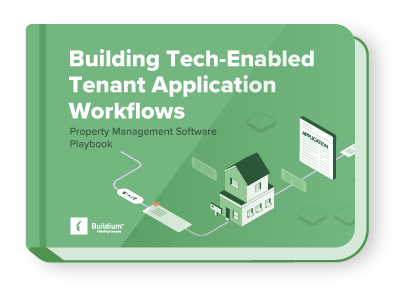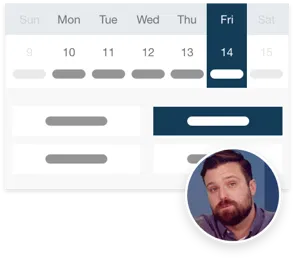When you’re evaluating the health of a rental property—or an entire portfolio—few metrics matter more than rental occupancy rate. It’s a simple number with serious implications for revenue, operations, and owner satisfaction.
In this post, we’ll explain what rental occupancy rate is, how to calculate it, what affects it, and how property managers can use it to drive better decisions for the properties they oversee.
What Is a Rental Occupancy Rate?
Rental occupancy rate is the percentage of rentable units in a property or portfolio that are currently occupied and generating income. It’s a core metric used by landlords, property managers, and investors to assess how effectively a property is being leased.
For example, if a 50-unit building has 47 leased units, the occupancy rate is 94%. The higher the rate, the fewer vacancies you’re dealing with—and the closer you are to maximizing potential rental income.
Occupancy rate can be calculated for a single building, an entire portfolio, or even a submarket. Regardless of the scale, it’s one of the clearest indicators of a property’s performance.
How to Calculate Rental Occupancy Rate
The formula is straightforward:
Occupancy Rate = (Occupied Units ÷ Total Units) × 100
If you have 60 rental units and 54 are currently occupied:
(54 ÷ 60) × 100 = 90% occupancy
You can track this number monthly, quarterly, or annually, depending on how closely you monitor leasing activity and report to owners. Some property managers also break it down by unit type (1-bedroom vs. 2-bedroom) or building, especially when overseeing larger portfolios.
What’s the Difference Between Occupancy Rate and Vacancy Rate?
Occupancy rate and vacancy rate are mirror metrics. If your occupancy rate is 92%, your vacancy rate is 8%. Both offer insights into leasing performance, but occupancy rate is typically more helpful when evaluating revenue potential and portfolio health.
In industry reports, you might see vacancy rate used more often for benchmarking across markets. But in everyday property management operations, occupancy rate is the more actionable metric.
What’s Considered a Good Rental Occupancy Rate?
The answer varies depending on your location, property type, and leasing goals. That said, here’s a general guide:
- 95% and above: Excellent performance. Most units are leased with minimal downtime.
- 90–94%: Healthy and sustainable, with some room to optimize.
- Below 90%: May signal issues with pricing, marketing, property condition, or tenant turnover.
One important caveat: 100% occupancy isn’t always ideal. If your units are filling immediately and you have a waitlist, your rents may be underpriced. Slight vacancy can be a sign of strong pricing discipline—especially in high-demand markets.
What Affects Rental Occupancy Rate?
A variety of internal and external factors can influence how many of your units are leased at any given time. Property managers should keep an eye on:
- Rental pricing: If rent is too high compared to comps, units may sit vacant longer.
- Listing quality: Incomplete or outdated listings can reduce interest from prospective tenants.
- Maintenance delays: Units that aren’t ready for showings can extend vacancy time.
- Seasonality: Many markets experience higher turnover and lower demand in the winter months.
- Lease expiration cycles: A high volume of simultaneous move-outs can create short-term dips in occupancy.
- Property condition: Outdated interiors or curb appeal issues can make it harder to close leases.
- Competitive supply: A surge in new inventory nearby may pull demand away from your property.
Understanding what’s driving a drop—or an increase—in occupancy gives you the insight to act fast and adjust your strategy.
Why Rental Occupancy Rate Matters for Property Managers
If you manage rental properties, your occupancy rate is one of the clearest signals of whether your leasing and retention strategies are working. It matters because it touches so many parts of your business:
Revenue forecasting
Occupancy directly impacts income. If 5% of your units are vacant, you’re leaving revenue on the table. Tracking this metric helps you project earnings and budget effectively.
Leasing performance
A low or declining occupancy rate could signal pricing issues, weak demand, or marketing inefficiencies. It’s a prompt to dig into what’s holding leases back.
Owner communication
Owners care about two things: income and asset value. Occupancy rate speaks to both. It’s often the first number they look for in monthly reports or performance reviews.
Vendor and maintenance planning
Vacancy periods are the best time for major repairs and upgrades. Tracking occupancy helps you schedule maintenance efficiently and avoid surprises.
Portfolio comparison
If you manage multiple buildings or units across markets, occupancy rate gives you a simple, apples-to-apples metric to benchmark performance.
Rental Occupancy Rate in Action: An Example
You’re managing a 30-unit apartment building. Over the past month, four leases ended. One new lease has started, and two applicants just backed out.
Right now, 25 units are occupied:
(25 ÷ 30) × 100 = 83% occupancy
You dig into the data and find:
- Pricing on vacant units is $100 over market comps.
- Your listings are missing professional photos.
- Most showings are being scheduled three days out.
You adjust pricing, update the listings, and open more showing times. Within two weeks, three of the five vacant units are filled—bumping occupancy back up to 93%.
The takeaway? Tracking occupancy rate helps you catch issues early and course-correct before it impacts revenue long-term.
How to Improve Rental Occupancy Rate
If your occupancy rate is lower than you’d like, here are some practical ways to boost it:
Audit your pricing: Check comps in your market. Even a $25–50 adjustment can attract more applicants without cutting too deeply into revenue.
Refresh your marketing: Upgrade listing photos, write stronger descriptions, and make sure your units are visible on top rental platforms.
Speed up your response times: Follow up with leads quickly. In competitive markets, response time can make or break a lease.
Pre-lease before move-outs: Start marketing units before they’re vacant to minimize downtime between tenants.
Improve tenant retention: Longer stays mean fewer turnovers. Focus on clear communication, fast maintenance, and strong resident experiences to keep your best tenants renewing.
Frequently Asked Questions
How often should I calculate occupancy rate?
Most property managers track it monthly and report it quarterly or annually. High-performing portfolios may review it weekly during peak leasing seasons.
Is 100% occupancy always a good thing?
Not necessarily. If you’re always full and have a long waitlist, your rents might be below market. A small vacancy rate can indicate optimized pricing.
How is occupancy tracked in short-term or mixed-use properties?
For short-term rentals, occupancy may be measured by nights booked instead of leased units. In mixed-use, you’ll typically calculate residential and commercial occupancy separately.
Can I use software to track occupancy?
Yes. Property management platforms like Buildium offer real-time occupancy reporting and dashboards so you can monitor performance across units and properties.
Read more on
